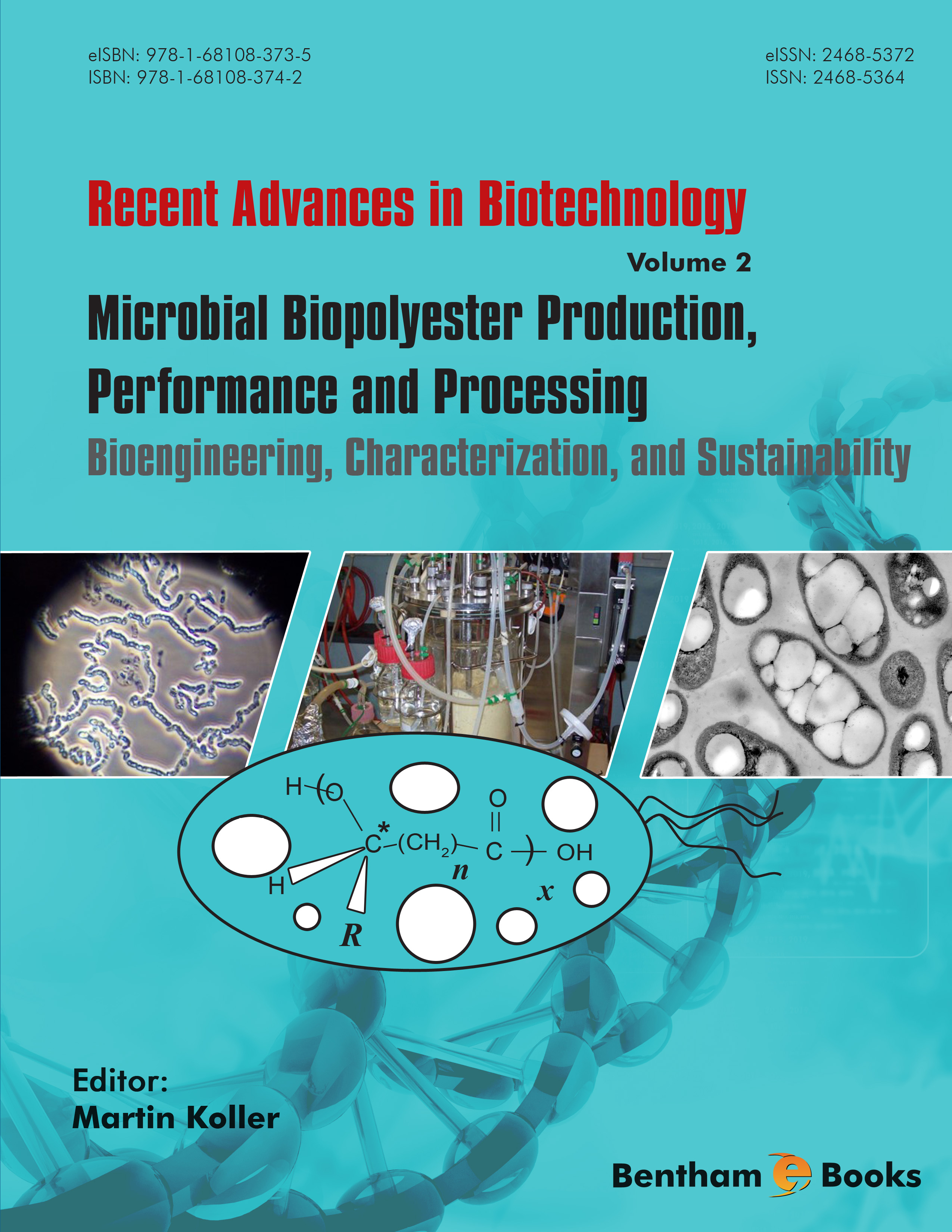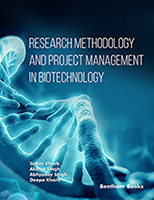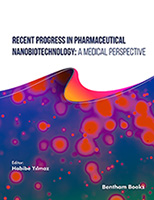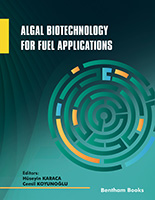This eBook presents current R&D activities accomplished in diverse research institutions worldwide aiming at replacing well-known plastics originating from fossil resources by alternatives from nature. The importance of these R&D endeavors can be visualized by considering a global production of 300 Mt of plastics per year; the major share thereof is recalcitrant against bio-mediated degradation, and a rather modest portion of only about 20% of spent plastics undergoes recycling. “Environmentally degradable plastics” (EDPs) as sustainable alternatives are available, but cover less than 5% of today´s plastic market. Further, the expression “environmentally degradable plastic” is often used highly ambiguously or even in an explicitly incorrect context; so called “bio-plastics” do very often not come up to the characteristics “biobased”, “biodegradable”, or “biocompatible”.
Microbial polyhydroxyalkanoates (PHA), a versatile group of polyesters produced by nature as prokaryotic storage materials, are contemporarily attracting increasing attention as polymeric basic materials to be implemented in various fields of the plastic market. This fact is manifested by the nowadays exponentially growing number of scientific publications and patent applications related to this topic. Not only does the biobased nature of PHAs underline their significance for sustainable future developments, but also the high flexibility and adjustability of their properties, their biodegradability and, to a steadily increasing extent, their biocompatibility. To develop overall sustainable and efficient production processes, one has to take into account all single process steps, starting from microbiology and enzymology, selection of suitable inexpensive raw materials, optimizing process engineering and process regime, until enhancement of product recovery in terms of time-, energy-, and material input.
As mentioned before, we nowadays unambiguously witness a tremendously increasing trend towards new polymeric products from nature to replace contemporary plastic based on fossil feedstocks, especially in areas where established, highly recalcitrant plastics cause environmental concern. After now already decades of global R&D developments in the field of microbial polyesters (mainly polyhydroxyalkanoates - PHA), and numerous body blows on the way to their since a long time announced market penetration, it is generally recognized that the success of these promising new materials needs the improvement of both material performance and production prices. The perception of our exigency to exit today´s disastrous “Plastic Age” were my incentive for about fifteen years of research in the field of these biopolyesters.
Starting with my Master thesis on novel, ecologically benign methods for extraction of PHA from microbial biomass in the group of Gerhart Braunegg at Graz University of Technology in the year 2000, I got more and more fascinated by these unique biopolyesters. Not only the multiple and complex metabolic roles, the various functions of PHA in diverse ecosystems, the high diversity of PHA accumulating microorganism and the inestimable variety of different “plastic like” properties of different types of PHA attracted my attention, but also the variety of cultivation strategies in discontinuous and continuous mode which can be implemented to produce PHA in an efficient way at pre-defined composition and quality. Most of all, raw material aspects which need to be addressed to make PHA production cost-efficient for me always constituted the central field of interest; in this context, I had the honor to perform my doctoral thesis, guided by G. Braunegg, on production of PHA from whey as an abundant raw material in the frame of the EU-FP5 project WHEYPOL. Years later, we upgraded another industrial surplus material to a feedstock for PHA biosynthesis, namely waste lipids from the rendering and animal processing industry. Here, enabled by the EU-FP7 funded project ANIMPOL, our multidisciplinary and international consortium demonstrated how the utilization of this waste stream on the one hand contributes to minimizing waste disposal issues, and, on the other hand, provides for cost-efficient production of PHA biopolyesters and even positively contributes to biodiesel industry. As a common feature of all PHA-related research activities I carried out together with G. Braunegg, one should emphasize the strong industrial embedding in all projects, either as direct project sponsors, advisors, or as active project partners. At this point, I would like to take the chance to express my graduate to all our industrial partners and financiers who enabled our research and, by cooperating with us, underlined the high industrial significance of this novel class of biomaterials.
Coming to the core part of this issue, all process phases, starting from the genetic and enzymatic procedures in the microbe´s interior, raw material selection and allocation, the production process in adequate bioreactors including kinetic analysis and mathematical modelling, process engineering aspects regarding fermentation modes, feeding regimes and bioreactor selection, and, last, but not least, product recovery and refining (“downstream processing”) need consideration and optimization; this goes in parallel with market issues and holistic consideration of sustainability aspects.
Although an increasing number of high-quality monographs and reviews are contemporarily published, none of these addresses all aspects of the holistic PHA production process in a comprehensive way. The volumes “Microbial biopolyesters – Production, Performance and Processing aspects 1 and 2” of the eBook series “Recent Advances in Biotechnology” addresses this shortcoming by sixteen articles written by carefully selected leading scientists and their associates, performing their work on three different continents. Of course, it was connected to considerable efforts to select the most outstanding groups for all special chapters. These research groups are since years or sometimes even since decades active in different scientific areas involved in this fascinating and strongly emerging field of research, as demonstrated by their tremendous number of related publications and patents. I am outstandingly happy and thankful to all these scientists for their willingness to spend their precious time in contributing to the work at hand. As a result, the synopsis of both volumes is an outstanding composite of comprehensive articles covering all single aspects which are nowadays recognized to be decisive for sustainable and efficient production of microbial polyhydroxyalkanoate (PHA) biopolyesters. Further chapters
The volume at hands, “Part 2: The Engineer´s Point of View (Aspects of Engineering, Characterization, and Sustainability)” encompasses eight specialized chapters addressing topical endeavors to enhance the processibility of PHA towards vendible bio-technomers, give novel insights into sustainability aspects of PHA production as a holistic process, and offer critical insights into the features which contemporarily need to be addressed to make PHA competitive with their counterparts of petrochemical origin in terms of economics and material performance. These chapters address market issues needed to accelerate the success of PHA and related biopolymers on the market, elaborates sustainability issues, and provides an insight into the impact of PHA composition on the monomeric level on the final properties of PHA biopolyesters. In this context, the reader will learn about current techniques for tracing intracellular PHA, and for characterization of these polyesters regarding their decisive physical properties. Further, new strategies are presented how to increase the quality of PHA by adjusting the degree of crystallinity and profiting from nanotechnology to design smart biopolymers. More engineering-related chapters provide the up-to-date knowledge on bioreactor design and fermentation regime to enhance PHA production by innovative technological means, or emphasize the need for sustainable downstream processing techniques for PHA recovery from microbial biomass. Finally, mathematical modelling as a tool to better comprehend PHA production and to restrict the number of laboratory experiments are discussed.
The subsequent paragraphs shall give the respected readership an impression of the contents of the specialized chapter articles of this issue:
Chapter 1:
Lucia Amaro and colleagues, active at the highly recognized laboratories of Emo Chiellini in Pisa, provide an analysis of the main criteria for the selection of (bio)materials suitable for the production of flexible and rigid packaging which addresses the expectations of the customer, economics and environmental aspects. In this context, the authors focus their critical paper on mechanical properties, melt flow behavior of PHA homo- and copolyesters, processing by melt extrusion, film blowing, injection molding, etc., and, as culpably underestimated in the past, on odor issues of biopolymers. Guidelines to overcome current problems faced by bacterial polyesters and their relationship with the current polymers market are also presented in this chapter.
Chapter 2:
Andrej Kržan from the National Institute of Chemistry in Ljubljana, Slovenia, demonstrates in his article that EDPs such as PHA are growing rapidly in number and regarding their fields of application. The author stresses that assessing their major characteristic, namely degradability, which also includes biodegradability as final stage, is a challenging issue both scientifically and in technological aspects, and, in the past, resulted in different interpretations. To standardize criteria and techniques, various standards were created by different standardization institutions, which also act as a basis for certification patterns. An up-to-date inventory of the rapidly growing standardization body is presented with basic interpretation to help guide the non-expert.
Chapter 3:
Predrag Horvat and colleagues from the University of Zagreb, Croatia, are well-known in the scientific community for their expertise in mathematical modelling of bioprocesses. In their comprehensive article, these authors emphasize that process/strain optimization procedures are unavoidable in the improvement of large-scale bioproduction processes. These procedures are necessary on bioreactor level and on biochemical/genetic level of producing strains. Here, mathematical modeling is described as a useful remedy. Mathematical models applied for PHA biosynthesis (classified as both structured and unstructured), are classified into low-structured, formal kinetic, high-structured (metabolic), dynamic, neural networks, cybernetic, or hybrid model type. In their chapter, the authors discus each specific group of models is in the light of its applicability and benefit for increased productivity, enhancing of the specific PHA biosynthesis rate, and better understanding of the intracellular metabolic regulation systems. Characteristics of production strains, particularities of MMC and features of industrial-scale plants cannot be described by one sole model type alone able to address all different needs. In this context, the authors suggest that satisfying, compromised, perhaps most promising solutions are obtained by the combination of mechanistic, neural, cybernetic, and computational fluid dynamics (CFD) types of models. This hybrid modelling approach generates a holistic picture of the PHA production process by benefiting from the advantages of different model types.
Chapter 4:
Kianoush Khosravi-Darani and colleagues, located at the Shahid Beheshti University of Medical Sciences, Tehran, Iran, summarize engineering issues in PHA production by linking bioreactor design to biochemical ongoings in PHA producing strains. The authors emphasize that addressing the effect of the hydrodynamic and mass transfer phenomena on PHA production is necessary independent on the applied bioreactor types. PHA production performance increases with operational and design parameters such as superficial gas and liquid velocities and also height and length of the bioreactors in the accumulation phase. Time constant analyses substantiate previous findings that the rate of oxygen consumption constitutes the process-determining step at such superficial gas- and liquid velocities exceeding the specific values. Batch, fed-batch and continuous fermentation mode are compared regarding cell concentrations and intracellular PHB mass fractions in bioreactors to reduce production expenses. Further, the authors describe that the control of carbon to nitrogen ratio has direct impact on PHB production, and accumulation of PHB inclusion bodies in most microorganisms depends directly on limitation of nutrient components. Application of recombinant or wild microbial production strains which produce PHB during balanced growth could enable the setup of highly efficient one-stage continuous chemostat production systems. In addition, the authors describe autotrophic cultivation with CO2 and CO as another strategy towards cost-efficient PHA production.
Chapter 5:
Abhishek Dutt Tripathi from the Banaras Hindu University in India and his associates devote their chapter to the discussion of techniques for downstream processing to recover PHA from microbial biomass. This is of special importance due to the fact that downstream processing constitutes the second largest cost category in the PHA production cycle. The authors compare various established and novel recovery techniques reported and studied at small laboratory scale as well as in (semi)industrial facilities. These techniques encompass methods of solvent extraction, chemical biomass disintegration, enzymatic and/or mechanical disruption, application of supercritical fluids, flotation, subjecting biomass towards gamma irradiation, and implementation of aqueous two-phase systems. The article summarizes all currently known recovery methods, and compares them in terms of efficiency and the quality of the resulting PHA regarding product purity and impact of the recovery technique on molecular masses.
Chapter 6:
Giin-Yu Amy Tan and co-authors, associated with Jing-Yuan Wang and Swee Ngin Tan, constitute an authorship distributed over the Hong Kong Polytechnic University and the Nanyang Technological University in Singapore. These authors address current and emerging advanced analytical technologies for biopolyesters characterization, a definitely highly topical item. The authors emphasize that analysis and characterization of PHA biopolyesters remain an integral aspect of the PHA industry, correlating the microbial processes performance and PHA’s physiochemical properties. The vast number of structurally diverse PHA monomers has also made PHA analysis extremely challenging. Numerous techniques have been exploited for the detection, quantification, and characterization of microbial PHA. New techniques are also continuously being developed with advancing instrumentation capabilities. This book chapter introduces the basics underlying current and emerging PHA analytical techniques, and summarizes key protocols and information related to these techniques. The potential applications of emerging techniques are also highlighted and discussed.
Chapter 7:
The complexity of PHA composition on the monomeric level is also addressed by the article provided by Ayaka Hiroe, Sho Furutate, Shoji Mizuno, and Takeharu Tsuge from the Tokyo Institute of Technology. These authors focus on the recent progress in improving two types of PHA, namely 3HB-based copolymers and unusual PHA homopolymers, which show improved material properties and/or cannot be synthesized in nature. 3HB-based copolymers which not only include 3-hydroxyvalerate, 3-hydroxyhexanoate, and long chain 3-hydroxyalkanote-containing copolymers, but also branched building blocks like 3-hydroxy-4-methylvalerate or 3-hydroxy-2-methylbutyrate, aromatic building blocks like 3-hydroxy-3-phenylpropionate, 3-hydroxyphenylvalerate, or 3-hydroxy-5-(4′tolyl)valerate, and even lactate-containing copolymers are reviewed in this chapter. On the one hand, the work discusses material properties like melting points and glass transition temperatures of these different biopolyesters in dependence of the structure and molar share of different building blocks; on the other hand, also the metabolic background of the biosynthesis of these rather exotic PHA constituents is elucidated.
Chapter 8:
It is well known that the physical properties of a thermoplastic semi-crystalline polymer such as thermal, mechanical and gas permeability properties are markedly influenced by the crystalline structure and morphology. As described by Patrizia Cinelli and associates from the University of Pisa and the National Research Council in Pisa, Italy, these characteristics are controlled by the solidification and processing conditions. A full knowledge of the structure and morphology of the crystalline phase and its quantification are crucial for both the comprehension and the prevision of the final properties of a PHA-based material, as small changes in crystallinity can dramatically modify its properties. The principles that govern the relationships between structure and properties of the biopolymers are the same that determine the behavior of the fuel-derived polymers. The authors underline that extensive use of PHA has been hindered until now by some insufficient properties relevant for practical applications, which make these polymers not equivalent to conventional thermoplastics; many attempts have been performed to improve their properties, mainly by preparing mixtures with various different compounds or with other polymers. In the chapter of Cinelli et al., an analysis of the mechanical properties, especially related to the crystalline degree, of PHB, some its copolymers, blends, composites, and nanocomposites is discussed.
With this issue, we wish to address scientists active in the field of biopolymers, fermentation technology, and polymer science. The eBook is also dedicated to students of higher level which are involved in the fields of polymer chemistry, environmental science, biotechnology, microbiology, and overall life sciences; we hope that this eBook is helpful for you! In addition, we strongly believe that the issue attracts also the attention of representatives of polymer industry. Do you want to get to feet on the ground of innovative polymeric products? This might provide for the ignition sparks for a broader implementation of PHA biopolyesters on industrial scale.
I am tremendously optimistic that the exploratory and scientific efforts collected and summarized in the eBook volume at hand will motivate researchers all over the planet to deepen their R&D activities in this field, and to attract the interest of undergraduates as well as of innovative representatives from relevant industrial sectors. First and foremost, these activities shall boost the impatiently desired market penetration of such types of “bio-plastics” which fairly merit this designation. The content of this eBook emphasize that “bio-inspired” remedies for prevalent ecological problems are already available, developed by experts engineering and life sciences, or these solutions are at least being developed; they are expecting their industrial implementation in the emerging field of “White Biotechnology”!
Again, I would like to cordially thank all contributors to this issue for their supreme work.
Graz, Styria, Austria, January 25th, 2016.
 Martin Koller
Martin Koller
Office of Research Management and Service
c/o Institute of Chemistry
University of Graz
NAWI Graz, Heinrichstrasse 28/III, 8010 Graz
Austria






